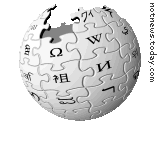I was going to call NPG this morning first thing as a volunteer, to see what could be reasonably done to avert a public battle — a public battle would really foul up our other museum liaison volunteers’ ongoing efforts. But I was awake all night with a sick child and so I just got up …
Has anyone reading this called yet, as a volunteer? Physchim62, who did a lot to get the American Chemical Society working with us, was going to call. Has anyone else?
(I don’t hold out much hope for this — the NPG’s position has been completely consistent and completely uncooperative for many years. But it’s always worth asking.)
It’s reasonably important to avoid directly going into details of the possible legal case, for Dcoetzee’s sake — but the NPG’s lawyers have effectively written a press release read by ten thousand Wikimedians and a million Slashdot readers. The letter clearly does directly and personally threaten a lot of them. I bet it’s been more widely read than any intentional NPG press release has been.
Ideal outcome: PD everything, they welcome a team of our photographers in.
Plausible good outcome: We put up the hi-res images with notes that they are PD in the US but the NPG claims copyright in Europe and releases them under copyleft, and full credit is requested in either case. (Copyleft is not as ideal as PD, but it’s plenty good enough for us.) We issue press releases lauding the NPG to the skies and say nice things about them forever.
Another plausible good outcome: They welcome a team of our photographers in. Careful supervision, etc. Then we can do stuff like infrared shots as well (which can show interesting things about a painting’s restoration history).
Awful outcome: great big legal and public relations battle. Even if we or they win, we both lose.
Bad outcome: mainstream press about this at all, really. It will hamper our efforts with other museums. The NPG probably doesn’t see it that way.
Any other possible outcomes to list?
Additional data point: the NPG has removed the hi-res versions. Thus, the Wikimedia copies are the only copies currently available. This makes it actually culturally important for us to keep them up!
Meanwhile, here’s an article you must read on this topic: Public Domain Art in an Age of Easier Mechanical Reproducibility by Kenneth Hamma, Executive Director for Digital Policy, J. Paul Getty Trust. Precis: do your best to get as many of the highest-quality copies out there as you can.
 Palo Alto Research Center reported that only 1% of edits by random users were kept. “They were all unspeakable shit,” said burnt-out administrator WikiFiddler451. “All of them. No, I’m not exaggerating. Go to Special:Newpages and read a day’s entries some time. You’ll start by deleting the whole database, before you get onto plotting the doom of humanity. Christ, why go on?”
Palo Alto Research Center reported that only 1% of edits by random users were kept. “They were all unspeakable shit,” said burnt-out administrator WikiFiddler451. “All of them. No, I’m not exaggerating. Go to Special:Newpages and read a day’s entries some time. You’ll start by deleting the whole database, before you get onto plotting the doom of humanity. Christ, why go on?”